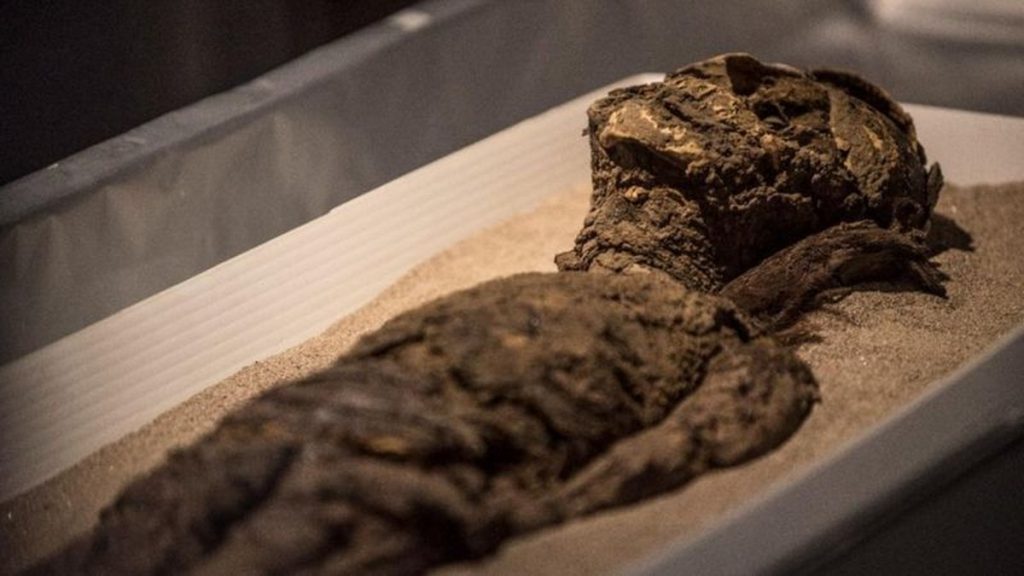According to the United Nations Educational, Scientific and Cultural Organization (UNESCO), the “oldest known archaeological evidence of artificial embalming of corpses” is in South America, on the arid coast of the Atacama Desert.
For more than 7,000 years, this area was inhabited by a community of hunters and gatherers where the dead were of great importance. Skilled embalming techniques Chinchorro culture Its history dates back to 2000 years before the Egyptians.
The value was recognized by UNESCO, which included, at the end of July 2021, their mummies and the area holding their archaeological finds in the World Heritage List.
a community of fishermen
The Shinshuru culture inhabited the area between the ports of Ilo, in Peru, and Antofagasta, no Chile.
Although extremely arid, the area had abundant marine resources due to the effects of the cold Humboldt Current, creating a phenomenon called ocean waves, and the many currents that cross it to discharge into the sea.
Thus, Shinshuru specialized in the exploration of marine resources and even developed many tools to facilitate fishing activity, such as the hook made of cactus spines and the tips of the harpoon.
The description provided by UNESCO also speaks of “tools made of materials of mineral and vegetable origin, as well as simple tools made of bone and shells.”
Information from the Chilean Museum of Pre-Columbian Art reveals that “from the tumors found in the ears of mummies at that time, they are known to have sunk to great depths.”
Their hunting skills allowed them to build semi-permanent settlements at the mouths of the region’s rivers and streams.
Although there is little information about how they were organized, there is evidence that they gathered in groups of 30 to 50 people who appeared to have some family relationships.
How did Shinshuru embalm the dead?
According to information from the University of Tarapaca in Chile, which has been leading the research and preservation of Shinshuru culture, The mummification process consisted of extracting the organs and entrails of the dead through an incision and replacing them Using vegetables, feathers, leather, wool and other materials.
The scalp and facial skin were also removed, and the skull was opened to remove the brain – once dry, it was filled with ash, earth, mud, and animal hair.
Finally, the face was formed, which was decorated with a wig made of human hair. The body was dressed in vegetable cloth and covered with a layer of clay.
Initially, this technique was only used on stillborn and newborn babies – Image: Getty Images via BBC
Although Shinshuru initially mummified only newborns and children—preserved with clay figurines—in their heyday, around 3000 B.C., they even embalmed all types of community members, regardless of age.
Different types of mummies
Also according to the University of Tarapaka, 208 mummies have been analyzed so far. The study of the sample revealed that the mummification techniques used by these people varied over time and were simplified in the final stages, unlike what happened with the Egyptians, who became more sophisticated in their techniques.
So far, 208 mummies have been analyzed – Image: Getty Images via BBC
There are black mummies covered with manganese oxide. Iron oxide-coated red mummies. and compressed mummies. Among the things they share in common are a wig, a face mask, and body-strengthening sticks.
“The Shinshuru culture considered their mummies to be part of the living world, which explains why they left their eyes and mouths open and used stretchers made of plant fibers or animal skin to transport them,” says Tarapaka University.
Advanced mummification techniques, aided by the climatic conditions of the desert and the saline environment of the Atacama, have resulted in the preservation of about 120 mummies now in the collection of the San Miguel de Azaba Archaeological Museum in Chile.
Watch our science and health videos:

“Music fanatic. Professional problem solver. Reader. Award-winning tv ninja.”



![[VÍDEO] Elton John’s final show in the UK has the crowd moving](https://www.tupi.fm/wp-content/uploads/2023/06/Elton-John-1-690x600.jpg)


More Stories
A South African YouTuber is bitten by a green mamba and dies after spending a month in a coma
A reptile expert dies after a snake bite
Maduro recalls his ambassador to Brazil in a move to disavow him and expand the crisis